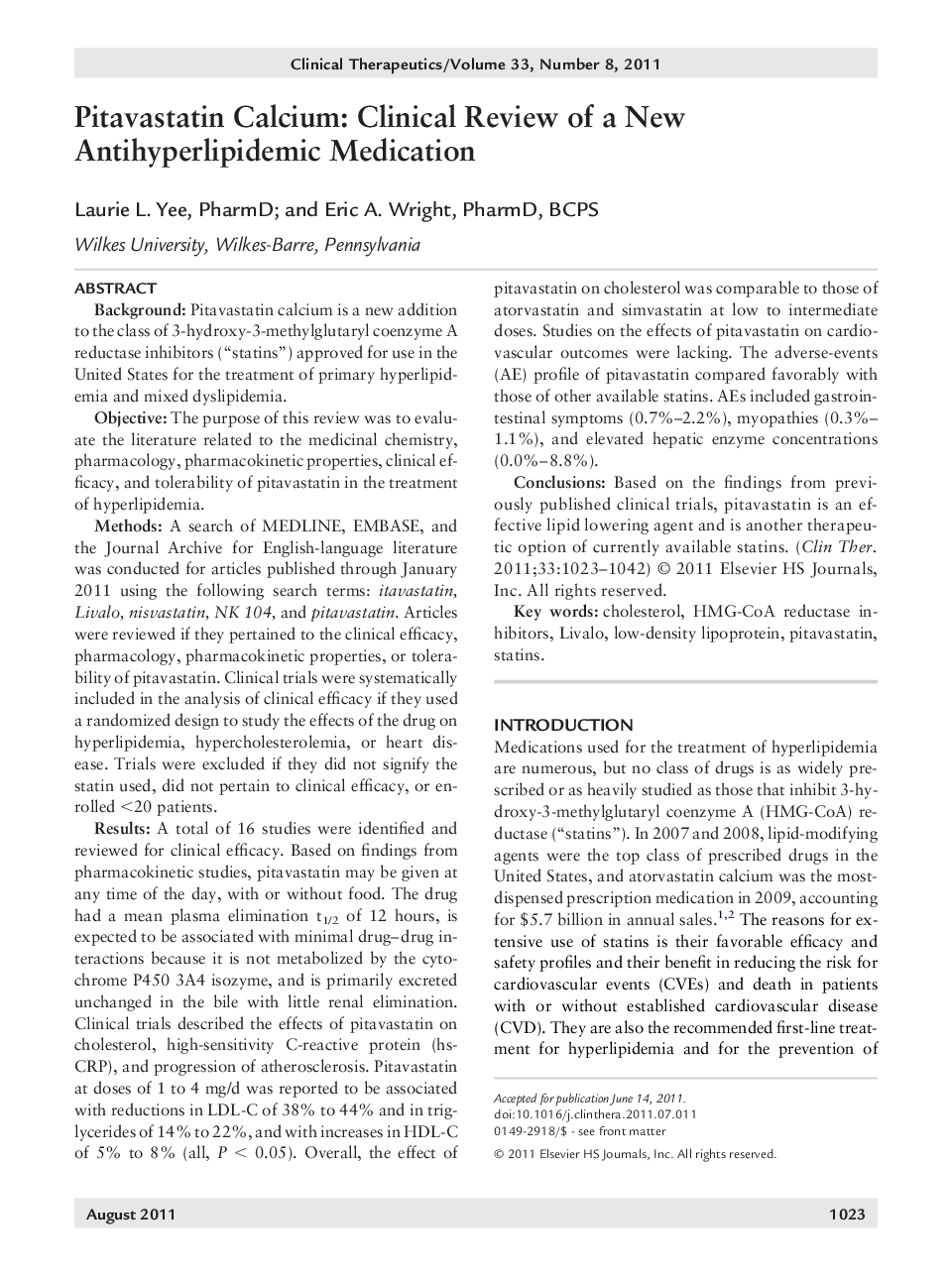| Article ID | Journal | Published Year | Pages | File Type |
|---|---|---|---|---|
| 2527429 | Clinical Therapeutics | 2011 | 20 Pages |
BackgroundPitavastatin calcium is a new addition to the class of 3-hydroxy-3-methylglutaryl coenzyme A reductase inhibitors (“statins”) approved for use in the United States for the treatment of primary hyperlipidemia and mixed dyslipidemia.ObjectiveThe purpose of this review was to evaluate the literature related to the medicinal chemistry, pharmacology, pharmacokinetic properties, clinical efficacy, and tolerability of pitavastatin in the treatment of hyperlipidemia.MethodsA search of MEDLINE, EMBASE, and the Journal Archive for English-language literature was conducted for articles published through January 2011 using the following search terms: itavastatin, Livalo, nisvastatin, NK 104, and pitavastatin. Articles were reviewed if they pertained to the clinical efficacy, pharmacology, pharmacokinetic properties, or tolerability of pitavastatin. Clinical trials were systematically included in the analysis of clinical efficacy if they used a randomized design to study the effects of the drug on hyperlipidemia, hypercholesterolemia, or heart disease. Trials were excluded if they did not signify the statin used, did not pertain to clinical efficacy, or enrolled <20 patients.ResultsA total of 16 studies were identified and reviewed for clinical efficacy. Based on findings from pharmacokinetic studies, pitavastatin may be given at any time of the day, with or without food. The drug had a mean plasma elimination t1/2 of 12 hours, is expected to be associated with minimal drug–drug interactions because it is not metabolized by the cytochrome P450 3A4 isozyme, and is primarily excreted unchanged in the bile with little renal elimination. Clinical trials described the effects of pitavastatin on cholesterol, high-sensitivity C-reactive protein (hs-CRP), and progression of atherosclerosis. Pitavastatin at doses of 1 to 4 mg/d was reported to be associated with reductions in LDL-C of 38% to 44% and in triglycerides of 14% to 22%, and with increases in HDL-C of 5% to 8% (all, P < 0.05). Overall, the effect of pitavastatin on cholesterol was comparable to those of atorvastatin and simvastatin at low to intermediate doses. Studies on the effects of pitavastatin on cardiovascular outcomes were lacking. The adverse-events (AE) profile of pitavastatin compared favorably with those of other available statins. AEs included gastrointestinal symptoms (0.7%–2.2%), myopathies (0.3%–1.1%), and elevated hepatic enzyme concentrations (0.0%–8.8%).ConclusionsBased on the findings from previously published clinical trials, pitavastatin is an effective lipid lowering agent and is another therapeutic option of currently available statins.
